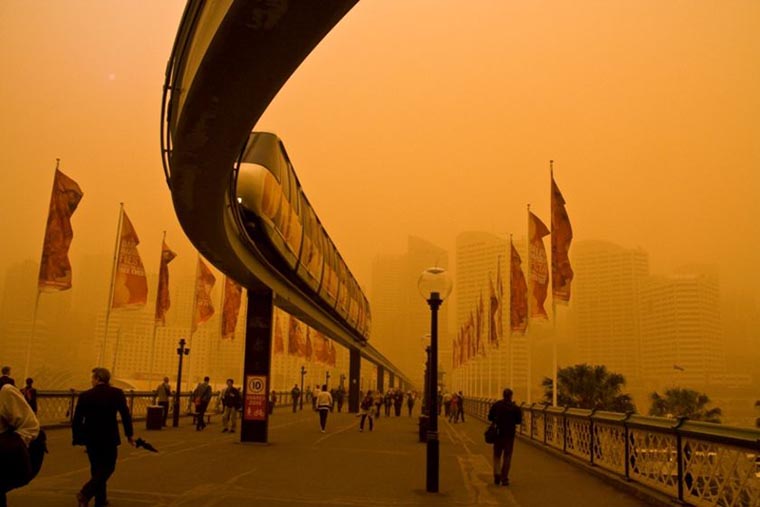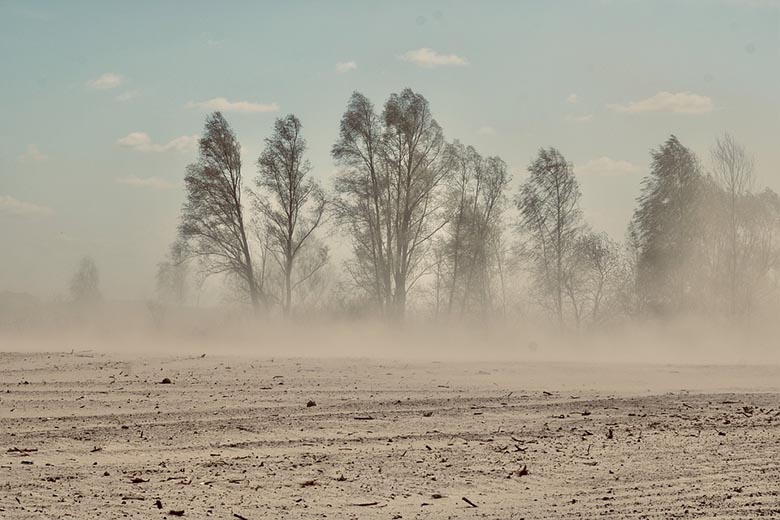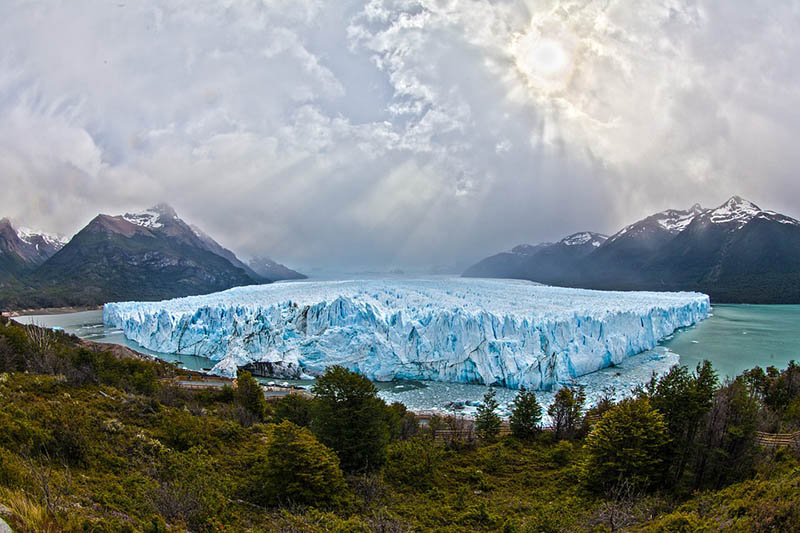Dust storms are dangerous because it is impossible to fight them, you can only hide from them. Environmental problems lead to the fact that this dangerous natural phenomenon occurs more often, and sometimes where it did not happen before.
Amazing facts about dust storms
- Such a natural phenomenon as a dust storm is really dangerous. A person caught off guard may simply suffocate due to the inability to breathe normally, as sand and dust particles clog the airways. The eyes can also easily get hurt if they aren’t protected somehow.
- The height and density of a dust storm directly depend on wind speed and other factors, such as, for example, the composition of the soil in the region. At the same time, this atmospheric phenomenon can occur not only in deserts and wastelands but also in dry steppes, prairies, and semi-deserts, occasionally even in forest zones.
- One of the main causes of dust storms is drought. If the soil is sufficiently moistened, the wind, even a hurricane, will not be able to lift enough of its particles into the air.
- Dust storms can carry diseases. The thing is that along with the sand, they also carry bacteria and viruses that have a chance to survive this journey, thereby getting to a new place in a viable state.
- With weak dust storms, it seems that some incomprehensible cloudy haze just hangs in the air. But strong storms look like a real dark wall of raging sand.

- Most often, dust storms originate in the Sahara Desert, which occupies a large part of Africa. In most cases, they rage in uninhabited areas, but not always.
- Sandstorms can carry hundreds of thousands and tons of sand over a distance of hundreds of miles, or even more. In the island African country of Cape Verde, located in the Atlantic Ocean, sometimes a real sand rain happens, and this is the sand from Sahara.
- In the Solar System, dust storms occur not only on Earth, but also on Mars, and on the latter, they take on monstrous proportions due to weak gravity and a tenuous atmosphere. On Mars, every year there is a season of storms that can cover half of the planet and last for months.
- Most often, this natural phenomenon is observed in Africa, the Middle East, and Australia, but sometimes sandstorms also occur in the United States and Canada. In the years 1930-1936, a series of catastrophic strong dust storms raged in the prairies of North America, it was called the Dust Bowl.
- Sand weighs quite a lot, so the height of the front of a dust storm usually doesn’t exceed several hundred feet. In the case of particularly strong winds, the front can extend up to 300 feet (1 km) in height, give or take, but this is rare.
- Egypt and Mauritania suffer the most from sandstorms because most of their territory is a desert. In these countries, almost every year, several dozen people die because of them.
- During a strong storm, the wind lifts several tens of thousands of tons of sand into the air every hour. When in 2009, such a storm hit Australia, covering the whole region, and, according to scientists, every hour the wind has been lifting more than 75 thousand tons of sand.
- The ancient Greek historian Herodotus wrote that in 525 BC, a sandstorm that broke out in the Sahara wiped out the army of the Persian king Cambyses, which numbered 50 thousand soldiers and many animals.
- Since the end of the last century, more and more dust storms have been hitting China. The reason for this was soil erosion caused by uncontrolled deforestation. Now the China authorities are making a lot of efforts to reinforce the soil.
- In addition to the obvious damage, dust storms also bring benefits. They replenish the iron reserves in the oceans and bring mineral fertilizers to the regions of Central and South America that lack them. Although they do much more harm than good, of course – they destroy the fertile soil layer, damage plants, interfere with air transport, and negatively affect the breathing of living organisms.


